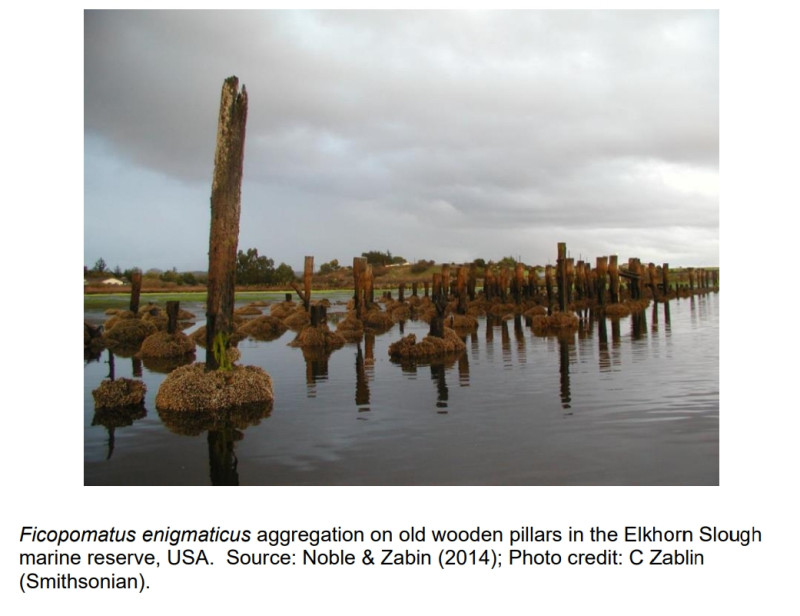Ficopomatus enigmaticus in the Hawkes Bay region
Information and research needs, ecology and management options for Ficopomatus enigmaticus in the Hawkes Bay region
Ficopomatus enigmaticus Fauvel, 1923 is a marine sessile serpulid worm that is non-indigenous to New Zealand. This species was first discovered in New Zealand in Whangārei Harbour in 1967.
It has subsequently established in several other North Island harbours and estuaries including the Ahuriri Estuary and Clive River near Napier, Hawkes Bay. The species is characterised by its formation of extensive biogenic reefs in hard and soft substrate habitats.
Observations and data from Hawkes Bay Regional Council (HBRC) have shown a steep increase in the extent of the Ahuriri and Clive River populations over recent years. This has raised concerns for the ongoing integrity of native ecosystems and the impact of “worm reefs” on civic infrastructure required for flood protection.
HBRC have secured several Envirolink grants to undertake a three stage project to investigate the ecology, management, and the control options for F. enigmaticus in the Hawkes Bay. Cawthron Institute have been contracted to provide this technical expertise for all three of the project stages.

In the first project stage (Envirolink grant 2219-HBRC261), recommendations were provided regarding information needs and research activities to inform decisions around pest management for the invasive worm.
Stage two (Envirolink grant 2244-HBRC265) captured current knowledge of the ecology, seasonality, reproduction and recruitment of F. enigmaticus, as well as the scale, timeframes and impacts of invasion or population explosion events, and the methods and outcomes of previous control attempts.
Stage three (Envirolink grant 2303-HBRC266) is the third and final output from the ‘advice phase’ around F. enigmaticus management in the Hawke’s Bay Region. The report provides information and recommendations on management approaches, feasibility and priority actions for design and implementation of F. enigmaticus interventions.
Shannon Weaver (Scientist Marine and Coasts Hawkes Bay Regional council) says they are progressing with the recommendations from this work through our biosecurity team at HBRC and that this project, alongside the outcomes of management work in our region, will provide useful context for other regions that may need to consider management of this species either now or in the future.
The reports can be viewed by using the following links:
Stage Two: Read the full report [PDF, 1.5 MB], Manual [PDF, 1.3 MB]
Stage Three: Read the full report [PDF, 1.5 MB]
Last modified: